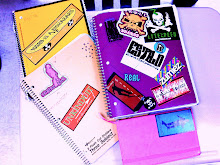Global: read " A successful failure" answer questions 1-5. continue to study for ancient rome test 1/21.
ES: we are studying rocks and how they are formed.
1. Sedimentary
2. Igneous
3. Metamorphic
work on your rocks, rocks, and more rocks lab.
MID TERM IS NEXT WEEK DURING CLASS.
I. Igneous Rocks
1. The same geologic processes have always been at work.
2. These processes formed the Earth as it is today over a long
period of time.
B. Rock: - a group of minerals bound together in some way.
C. Igneous rocks form from molten rock.
D. Molten rock is called magma.
E. Rocks that cool underground are called intrusive or plutonic rocks.
1. Distinct mineral crystals are present
F. Rocks that cool quickly are extrusive or volcanic rocks.
1. Cool quickly, so very small mineral crystals are present.
G. Magma comes in different types, ranging from
600 to 1200 degrees C :
1. Felsic magma - High in SiO2 silicates. Light in color.
Typically forms at the top of a magma chamber because of
its lower density.
Examples : Granite, quartz, orthoclase feldspar
2. Mafic magma - Low in silicates. Denser material higher in
magnesium and iron. Dark colored minerals form in this. Typically forms at the bottom of a magma chamber.
Examples : Basalt, hornblende, augite, biotite.
H. Igneous rock textures:
1. Crystal size is dictated by the rate of cooling of the magma
body. A slower cooling rate results in larger mineral
crystals being formed in the rocks as they cool.
2. Porphyritic texture - Large crystals surrounded by fine
grained rock. The rock initially cools slowly to form some large crystals and then cools quickly to form the fine grained rock surrounding them.
I. Common igneous rocks
1. Granite - Felsic. Coarse grained rock high in quartz,
micas, and feldspar
2. Gabbro - Mafic. Large crystals. Dark minerals dominant,
3. Rhyolite - Light colored, fine-grained igneous rock.
4. Obsidian - Cools very quickly. Forms volcanic glass.
Conchoidal fracture.
5. Pumice - Felsic lava that hardened with a lot of gases in it.
Many air bubbles in it make it possible for this
mineral to float on water.
II. Sedimentary Rocks
A. 3 kinds of sediments make up sedimentary rocks:
1. Clastics - fragments of other rocks.
2. Chemical - minerals that precipitate out of a watery
solution
3. Organic - Remains of plants and animals.
B. Clastic Sedimentary Rocks
1. Fragments that make up these rocks come in many sizes
and shapes.
2. Come from the erosion or weathering of pre-existing rocks
on land or underwater.
3. Sediments are cemented together with either silica, calcite,
or iron oxide.
4. Sediments running into a body of water are sorted by size
primarily. Larger particles settle out first because they're
heavier. Lighter silts and clays settle out last because of
their light weight.
5. 3 types of clastic rocks:
a. Conglomerate - Large rounded pebbles and sand
grains cemented together in rough
water.
b. Sandstones - Mostly grains of quartz. Many pores in
it can cause 30% of it to be air! Water
can usually pass through it.
c. Shale - Tiny flakes of the mineral kaolin are cemented
together. Easily broken. Usually form from
muds.
C. Chemically originated sedimentary rocks
1. Usually form when swamps, lakes, ore seas evaporate.
2. Limestone - Tiny grains of calcite cemented together.
3. Rock salt (Halite) - Table salt. Crystals form as seas
evaporate.
4. Gypsum - Form from evaporating seas as well. Main
ingredient of wallboard.
D. Organic Sedimentary Rocks
1. Mostly limestone and coal.
2. Organic limestones form from the shells of dead
microscopic organisms and the shells of ancient marine
mollusks.
E. Stratification is the visible layering of many sedimentary rocks.
Gives geologists clues about how rocks had formed.
III. Metamorphic Rocks
A. Regional Metamorphism, where certain areas of the Earth's crust
undergo extreme heat and pressure form most metamorphic
rocks.
B. When shale undergoes metamorphism, it can form many new
minerals:
1. Slate - 1st rock formed when shale is metamorphosed.
2. Schists - Named for primary mineral in it. Larger crystals present.
3. Gneiss - Coarsest grained metamorphic rock. Minerals form in bands in the rock. Usually light vs. dark colored bands
C. Contact metamorphism occurs when hot magma melts the rocks
in contact with it. Chemicals can react with the rocks along with
the heat and pressure.









 Living Environment: Respatory and Digestive systems test tomorrow. ( study ALL notes)
Living Environment: Respatory and Digestive systems test tomorrow. ( study ALL notes) 



